Introduction
 Fig. 1. Azalea lace bug, Stephanitis pyrioides, adults. Photo: Shaku Nair, University of Georgia
Fig. 1. Azalea lace bug, Stephanitis pyrioides, adults. Photo: Shaku Nair, University of Georgia Fig. 2. Andromeda lace bug, Stephanitis takeayi, nymphs and adults. Photo: Shaku Nair, University of Georgia
Fig. 2. Andromeda lace bug, Stephanitis takeayi, nymphs and adults. Photo: Shaku Nair, University of Georgia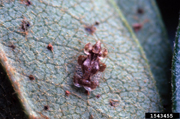 Fig. 3. Hawthorn lace bug, Corythucha cydoniae, adult. Photo: Jim Baker, North Carolina State University; bugwood.org
Fig. 3. Hawthorn lace bug, Corythucha cydoniae, adult. Photo: Jim Baker, North Carolina State University; bugwood.org Fig. 4. Grass lace bug, Leptodictya plana, adult. Photo: Kris Braman, University of Georgia
Fig. 4. Grass lace bug, Leptodictya plana, adult. Photo: Kris Braman, University of GeorgiaLace bugs are important pests of many ornamental trees and shrubs. They attack a broad range of evergreen and deciduous trees and shrubs and often go undetected until the infested plants show severe damage.
Both adults and nymphs have piercing-sucking mouthparts and remove sap as they feed from the underside of the leaf. Lace bug damage to the foliage of trees and shrubs detracts greatly from the plants' beauty, reduces the plants' ability to produce food, decreases plant vigor and causes the plant to be more susceptible to damage by other insects, diseases or unfavorable weather conditions. Repeated, heavy infestations of lace bugs may be the primary cause of plant death.
The most significant species of lace bugs that attack ornamental trees, shrubs and grasses are in the genera Stephanitis (azalea lace bug - Fig. 1 and andromeda lace bug - Fig. 2), Corythucha (hawthorn lace bug - Fig. 3 and sycamore lace bug) and Leptodictya (grass lace bug - Fig. 4)
Description
Adult lace bugs of Stephanitis and Corythucha spp. are flattened and rectangular in shape and 1/8 to 1/4 inch long. The area behind the head and the wing covers form a broadened, lace-like covering over the body of the insect. The wings of most lace bugs are light amber to transparent in color. Leptodictya lace bugs are more elongate and oblong and greenish-grey to light brown in color.
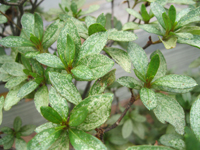 Fig. 5. Azalea lace bug damage on azaleas. Photo: Shaku Nair, University of Georgia
Fig. 5. Azalea lace bug damage on azaleas. Photo: Shaku Nair, University of Georgia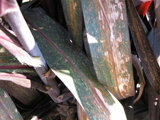 Fig. 6. Grass lace bug damage on ornamental grasses. Photo: Kris Braman, University of Georgia
Fig. 6. Grass lace bug damage on ornamental grasses. Photo: Kris Braman, University of Georgia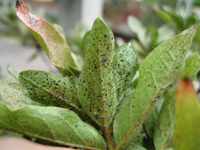 Fig. 7. Frass spots and cast skins help identify lace bug damage. Photo: Shaku Nair, University of Georgia
Fig. 7. Frass spots and cast skins help identify lace bug damage. Photo: Shaku Nair, University of Georgia
Lace bug nymphs are flat and oval in shape with spines projecting from their bodies in all directions. A lace bug nymph goes through five growth stages (instars) before becoming an adult. At each stage the nymph sheds its skin (molts) and these old skins often remain attached to the lower surface of infested leaves.
Azalea lace bug eggs are football-shaped and are transparent to cream colored. Hawthorn lace bug eggs, like many Corythucha species, are barrel-shaped and dark brown in color. Leptodictya eggs are similar to those of azalea lace bug. Lace bug eggs are found on the lower leaf surface, usually alongside or inserted into a leaf vein. Adult females secrete a varnish-like substance over the eggs that hardens into a scab-like protective covering.
Biology and Habits
The biology and habits of lace bugs vary somewhat according to species. Species that occur on evergreens, such as the azalea lace bug, Stephanitis pyrioides, overwinter as eggs on the underside of infested leaves. Eggs hatch in late March and early April in Georgia. The insect then passes through five nymphal instars before becoming an adult. It takes approximately one month for the insect to complete development from egg to adult and there are at least four generations per year.
Lace bugs in the genus Corythucha (hawthorn lace bug) and Leptodictya (grass lace bug) differ from Stephanitis species in that they spend the winter as adults on or near their hosts in bark crevices, mulch, tufts of grass or similarly protected areas. Spring-generation eggs are laid in small groups on the lower surface of leaves. Development from egg to adult may require four to seven weeks depending on species and climatic conditions. Three to four generations can occur in Georgia during the growing season.
Damage
Lace bug damage is readily distinguished from that of other insects and mites. Although lace bugs feed on the underside of leaves, the damage is most apparent on the upper leaf surface (Figs. 5, 6). Close examination of damaged leaves shows large numbers of adjoining chlorotic leaf cells. Positive identification of lace bug damage can then be confirmed by the presence of brown to black droplets of excrement and old “skins” of the nymphs on the underside of damaged leaves (Fig. 7).
Lace bug damage on evergreens is most common and severe on azalea, pyracantha, rhododendron and andromeda. It is especially important to prevent damage on evergreens early in the season because foliage will retain unsightly lace bug injury and be less functional for more than a year.
Lace bugs also attack a wide range of deciduous trees and shrubs. Plants found in the Georgia landscape that are commonly infested include hawthorn, cotoneaster, quince, American elm, apple, sycamore, oak and cherry. Recently, significant lace bug damage was observed on ornamental grasses, which are common in southern U.S. landscapes.
Control
Valuable plants that are susceptible to lace bug damage should be inspected in the early spring for the presence of overwintering lace bug adults, eggs and newly hatched nymphs. Inspect these plants every two weeks during the growing season for developing lace bug infestations. Where plants have a history of lace bug infestation, control measures should be applied during the development of the first generation of lace bugs before they have caused unsightly damage.
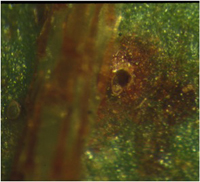 Fig. 8. Azalea lace bug egg parasitized by mymarid wasp. Photo: Kris Braman, University of Georgia
Fig. 8. Azalea lace bug egg parasitized by mymarid wasp. Photo: Kris Braman, University of GeorgiaPrior to initiating a chemical control program, look for lace bug predators and evidence of parasitized lace bug eggs on infested plants. When predators and parasites are present in the landscape, they can often help keep lace bug populations at acceptable levels. Predators of lace bugs include several mirid plant bugs. Mirid plant bugs are about the same size as adult lace bugs, but are more narrow and are bright red and black. A tiny mymarid wasp is known to parasitize eggs of both the azalea and andromeda lace bugs. When this wasp completes its development, it exits through a round hole it chews in the end of the lace bug egg (Fig. 8). Look through a magnifying glass for evidence of parasite exit holes in lace bug eggs to confirm the presence of mymarid wasps in the landscape.
If only a few lace bugs and little or no damage is observed, wash lace bugs off infested plants with a strong stream of water from a garden hose.
Repeated applications of insecticidal soaps (M-Pede®) or horticultural oils are also effective in controlling lace bug populations. In dealing with heavy infestations, chemical control is often necessary. Treatment of infested plants in early spring during the development of the first generation of lace bugs may reduce the number of insecticide applications needed to control heavy populations. Choose insecticides labeled for use against lace bugs by referring to the current edition of the Georgia Pest Management Handbook. Follow all directions, particularly safety precautions on the insecticide label. Not all of these insecticides are labeled for use on all host plants. Choose a product that is labeled for lace bug control and for application to the host plant.
Trade and brand names are used only for information. The University of Georgia Cooperative Extension, The University of Georgia College of Agricultural & Environmental Sciences does not guarantee or warrant the standard of any product mentioned; neither does the use of a trade or brand name imply approval of any product to the exclusion of others which also may be suitable.
Status and Revision History
Published on Jan 01, 2002
Unpublished/Removed on Mar 12, 2009
Published with Minor Revisions on Feb 13, 2012
Published with Full Review on Feb 17, 2015
Published with Full Review on Apr 09, 2024


























































